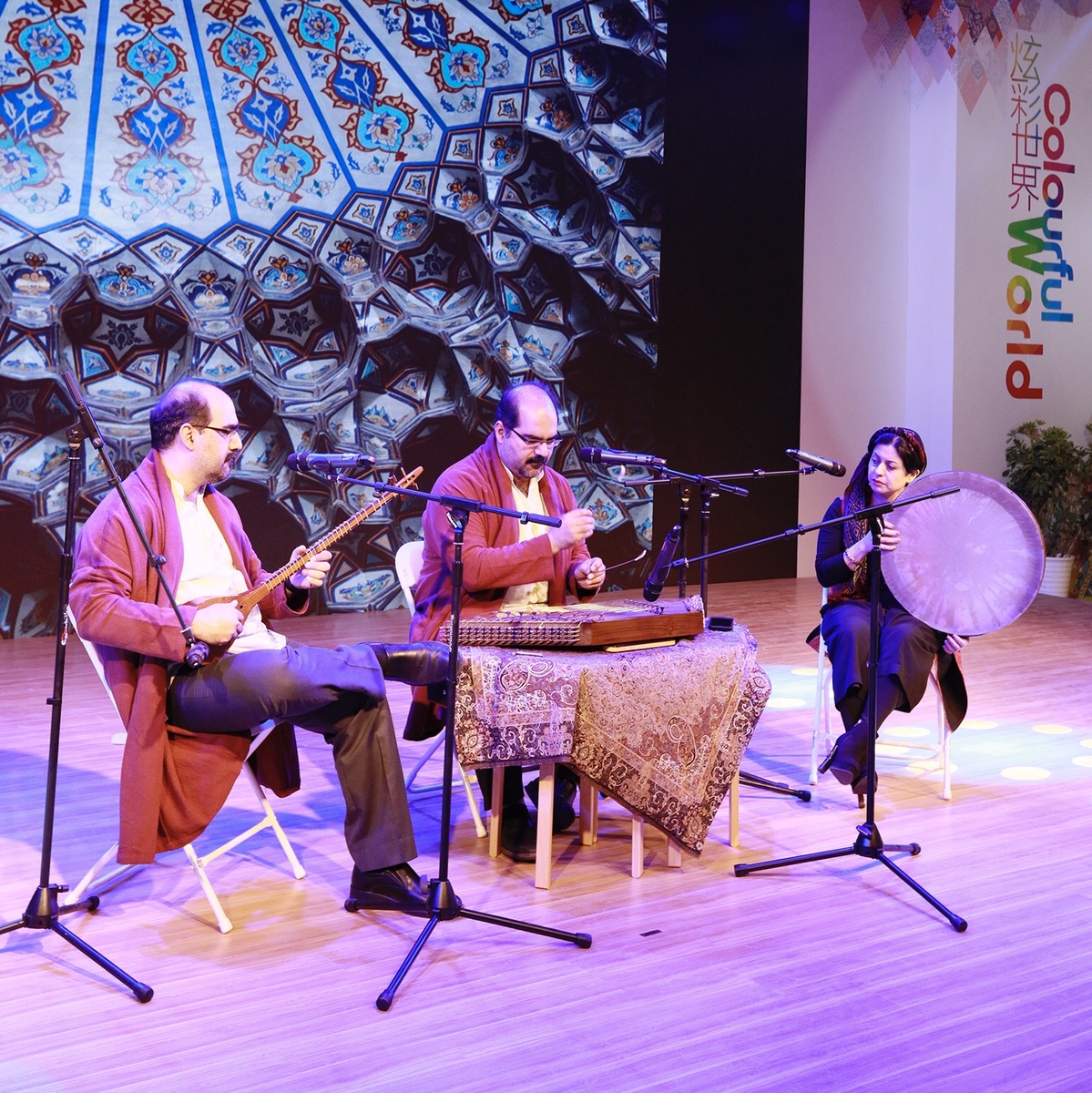
Iranian twins Majid Shamaeizadeh and Massoud Shamaeezadeh perform at a cultural expo in Beijing in 2018. (Photos by CHINA DAILY)
Thirty years ago, Iranian twins Majid Shamaeizadeh and Massoud Shamaeezadeh began to learn to play traditional Iranian musical instruments and would perform for family members on festive occasions.
"We were born in Isfahan, which is now considered the cultural and art capital of Iran," Shamaeezadeh says.
"So, among the families of Isfahan, at least one of the family members plays a musical instrument, and the others would know how to sing."
The brothers brought this family tradition with them when they moved to China in 2008.
Both speak fluent Chinese and are working to enhance cultural exchanges. They've also introduced the art of their homeland to their host country by opening several culture centers.
The most prominent of these was Persian Paradise - the Iran pavilion at the ninth China International Garden Expo in 2013.
The brothers, who earned doctorates in design-related disciplines at Peking University in Beijing, designed the pavilion themselves.
Shamaeezadeh says their doctoral research featured a cross-cultural comparative approach, which prompted them to engage in cultural exchanges.
During their studies, they registered the brand Persian Treasure at the newly founded Yuedu Music Valley zone in Shandong province's Qingdao.
"Music is a major part of our business scope," Shamaeezadeh says. "So are handicrafts."
The twins also hope to open Chinese culture centers in Iran, he says.
They are working with the Central Conservatory of Music in Beijing on developing dulcimer programs.

Iranian twins Majid Shamaeizadeh and Massoud Shamaeezadeh pose for pictures at the gate of Tsinghua University.
Iran is home to an ancient form of the instrument, called the santur, which is similar to China's yangqin.
"I heard this music that resembled the sound of santur. But when I tried the instrument, I realized it was actually different," Shamaeezadeh says.
"Later, I attended a music competition for foreign students... where I met two Malaysian students who played the Chinese yangqin. So, I learned to play from them."
The brothers are skilled in the santur and setar (an Iranian lute), and hosted three Iranian-music concerts in China in 2018. The last show was staged at the Central Conservatory of Music, where they met Liu Yuening, a professor at the conservatory and expert in yangqin.
"We decided we could cooperate," Shamaeezadeh says.
"From then on, we have taken Chinese yangqin musicians to Iran to perform on the same stage with the santur experts."
They have also brought Iranian musicians and researchers to Beijing to perform with Chinese dulcimer musicians and give lectures about Iranian music at the recent International Dulcimer Music Festival.
Liu says: "These events have positive and far-reaching effects on the development of the Asian dulcimer as part of the global dulcimer family."
The brothers plan to further cooperate with the conservatory to publish three books on Iranian dulcimer music that's suitable to play on the yangqin.
They are also connecting the conservatory with Iranian experts in other instruments, such as drums, to lecture in China.
"Although these instruments share the same roots, they have evolved to have their own characteristics in Iran and China," Shamaeezadeh says. "And this has further enriched the music from both countries."


